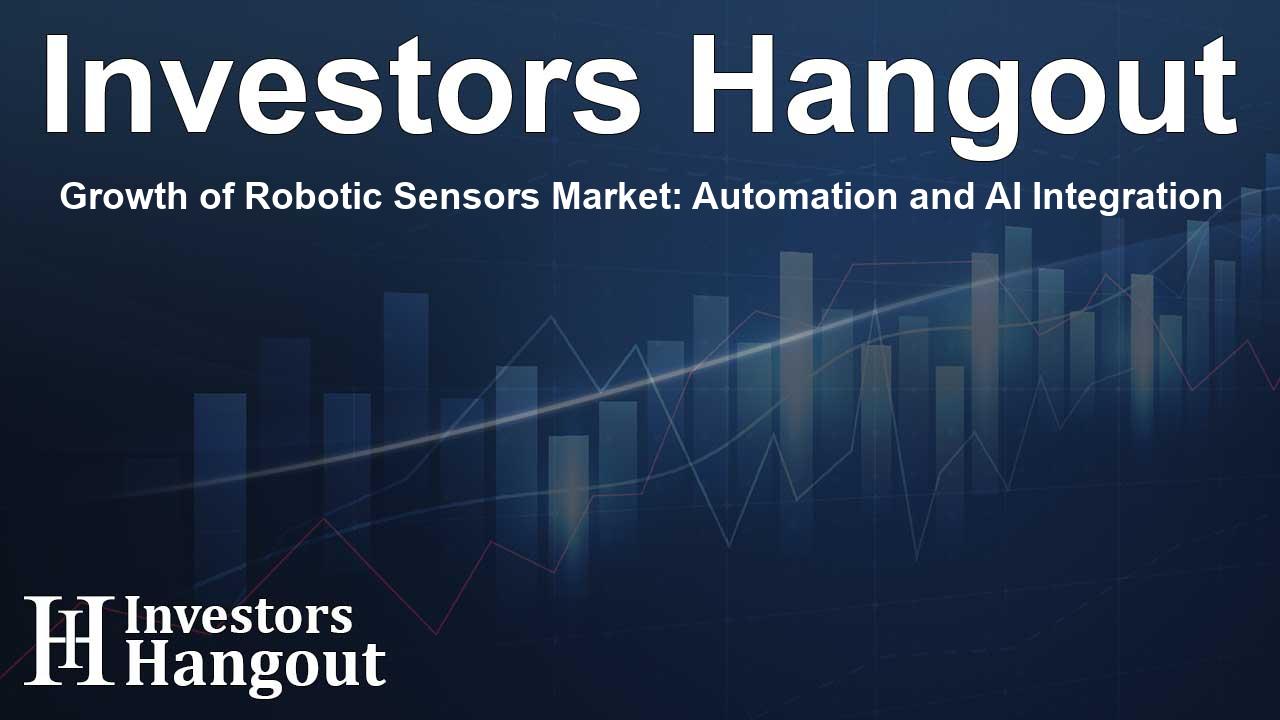Growth of Robotic Sensors Market: Automation and AI Integration

Exploring the Robotic Sensors Market's Potential
The robotic sensors market has gained significant traction and is set to grow exponentially, with estimates suggesting a jump from USD 2.13 billion to a remarkable USD 4.39 billion by the end of 2032. This growth trajectory highlights an impressive compound annual growth rate (CAGR) of 9.55% from 2025 to 2032. So, what is fueling this expansion?
Impact of Automation and AI Integration
At the forefront of this market evolution is the increasing integration of automation and artificial intelligence (AI) in various sectors. As industries seek to enhance operational efficiency, the demand for advanced sensor technologies has surged. Robotic sensors equipped with AI-powered features are enabling groundbreaking capabilities in manufacturing, logistics, and more, ensuring that operations run smoothly and efficiently.
Emerging Technologies Driving Growth
Leading-edge technologies, such as miniaturized components and AI-driven vision and force sensors, are making waves. These innovations are vital for collaborative and autonomous robots, which are increasingly being deployed in diverse applications like precision agriculture and medical surgery. Additionally, protective government policies and advancements in edge computing further contribute to the robust growth of the robotic sensors market.
Global Adoption Trends
Small and medium enterprises (SMEs) are increasingly adapting to these changes by adopting flexible and reconfigurable robotic systems that leverage sophisticated sensing technology. In fact, by 2025, it is anticipated that over 30,000 agricultural robots featuring advanced sensors will be active worldwide.
The U.S. market is expected to swell at a CAGR of 9.13% by 2032, primarily due to the evolving landscapes of industrial automation, government incentives, and heightened adoption rates of AI sensors. Notably, more than 60% of the installed 590,000 industrial robots in 2024 boasted advanced sensor suites, significantly enhancing precision across multiple sectors.
Market Leaders and Their Innovations
The competitive landscape of the robotic sensors market is robust, with several key players shaping the industry. Companies such as Omron Corporation, Keyence Corporation, and SICK Aktiengesellschaft are at the forefront, continuously innovating to enhance product offerings.
Product Offerings and Market Segmentation
Key segmentation of this market includes various types of sensors such as vision sensors, proximity sensors, and inertial sensors, each playing a crucial role in applications that span across object detection, navigation, and environmental monitoring. The industrial robots segment accounted for a noteworthy 39.5% of the revenue share in 2024, primarily due to its extensive applications in the automotive and electronics sectors.
Geographical Market Insights
Regionally, the Asia Pacific region has emerged as a leader in the robotic sensors market, capturing a 41.4% revenue share in 2024 and anticipated to grow at an impressive 9.96% CAGR. China's robust manufacturing ecosystem and smart manufacturing initiatives drive this growth.
In North America, notably led by the United States, the landscape is characterized by a strong industrial foundation and a continuous push for innovation and AI integration across multiple sectors, including healthcare and defense.
Future Opportunities and Challenges
The future of robotic sensors lies in their ability to adapt to changing environmental needs and technological advancements. Future developments may include enhanced sensor density, integration of varied sensor types, and the notable rise of collaborative robots (cobots) that safely work alongside human counterparts.
The advancement of sensor technologies not only opens up numerous opportunities but also comes with challenges related to supply chain resilience, especially in the face of geopolitical issues. Analysts suggest that companies must fortify their supply chains while remaining agile and innovative to overcome these hurdles.
Frequently Asked Questions
What is the projected market size for robotic sensors by 2032?
The robotic sensors market is projected to reach USD 4.39 billion by 2032.
Which sectors are driving the growth of the robotic sensors market?
Industries such as manufacturing, agriculture, and healthcare are significantly driving the growth of the robotic sensors market.
Who are the leading players in the robotic sensors market?
Key players include Omron Corporation, Keyence Corporation, and SICK Aktiengesellschaft among others.
What are the main types of robotic sensors?
Main types include vision sensors, proximity sensors, ultrasonic sensors, and force/torque sensors.
What is the expected CAGR of the robotic sensors market?
The market is expected to grow at a CAGR of 9.55% from 2025 to 2032.
About The Author
Contact Dominic Sanders privately here. Or send an email with ATTN: Dominic Sanders as the subject to contact@investorshangout.com.
About Investors Hangout
Investors Hangout is a leading online stock forum for financial discussion and learning, offering a wide range of free tools and resources. It draws in traders of all levels, who exchange market knowledge, investigate trading tactics, and keep an eye on industry developments in real time. Featuring financial articles, stock message boards, quotes, charts, company profiles, and live news updates. Through cooperative learning and a wealth of informational resources, it helps users from novices creating their first portfolios to experts honing their techniques. Join Investors Hangout today: https://investorshangout.com/
The content of this article is based on factual, publicly available information and does not represent legal, financial, or investment advice. Investors Hangout does not offer financial advice, and the author is not a licensed financial advisor. Consult a qualified advisor before making any financial or investment decisions based on this article. This article should not be considered advice to purchase, sell, or hold any securities or other investments. If any of the material provided here is inaccurate, please contact us for corrections.
